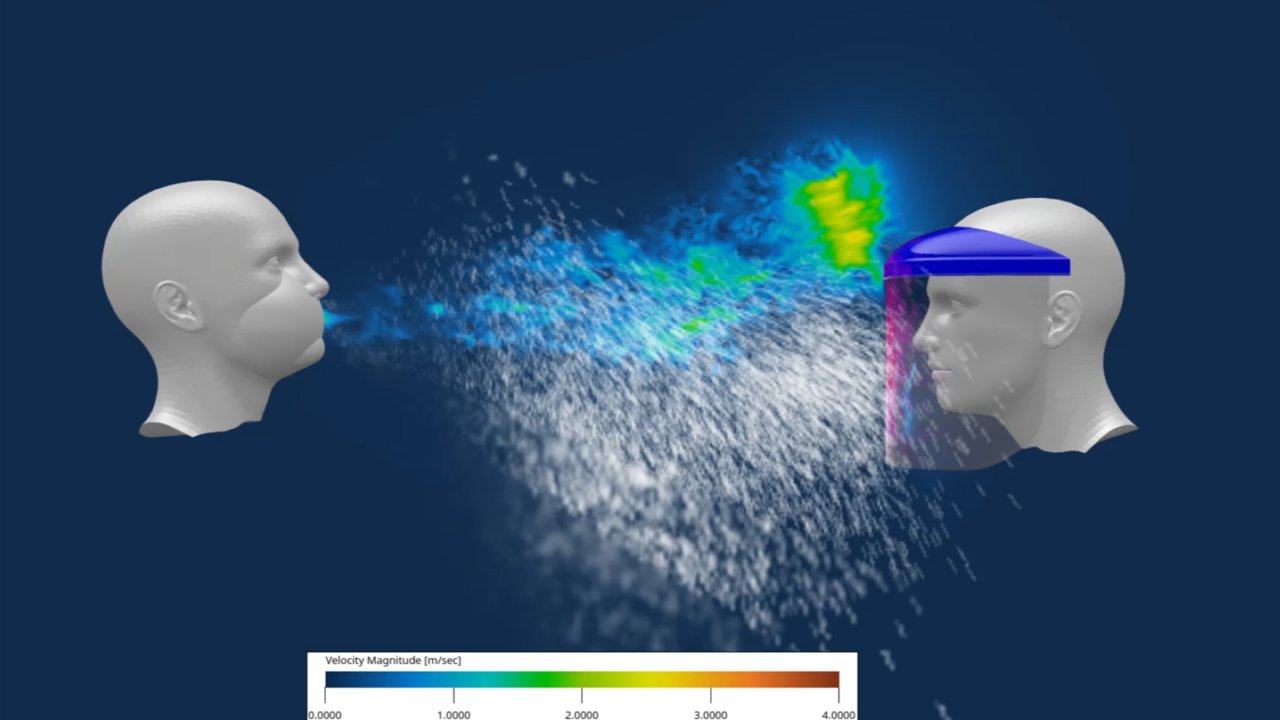After almost three months of lockdown and restricted activities, we are recovering and starting economic activities in unlock 1.0. The infrastructure of everyday life needs to be re-examined. Train carriages, buses, aircraft cabins and car interiors will need to be redesigned to minimize the risk of transmission between passengers. Shops, schools and offices will have to change their layout to allow for social distancing. Companies will need to ensure complete safety for their workforce at factories, warehouse and offices and demonstrate the importance of measures such as masks and shields. This is a new challenge for many, and best practices are not always clear, due to a lack of precedence. Management has to look into how to drive credible communications about the impact of the pandemic on company operations and product strategy. Many designers, engineers and architects have never had to consider contagion at such scale and depth before. Using simulation technologies allows an analysis of the contamination risks and help design palliative measures. The visualization of potentially-contaminated droplets or aerosols in the environment offers intelligible information for designers to act on and also provides clear, easy-to-understand images and videos for businesses to use when reassuring potential investors and customers.
Every breath from our lungs carries with it a cloud of tiny (mainly between 0.1 μm and 1.0 μm) water droplets. Such droplets can be the primary transmission vector of the coronavirus. While coughing or sneezing projects large numbers of respiratory droplets, talking and breathing also releases them. These droplets are potentially transported through the air, carried by the surrounding airflow, and can be breathed in by others. They can also deposit on surfaces that other people touch, leading to further infection if those people then touch their eyes, mouth or nose. [caption id=“attachment_8515231” align=“alignnone” width=“1280”] The effectiveness of a facemask, demo’d in the COVID-19 coronavirus sneeze simulation by Dassault. Image: Dassualt Systemes[/caption] When accounting for disease control in design, the key is to understand the transport of contaminated droplets. Simulation can model airflow through environments such as vehicle interiors, aircraft cabins, and buildings, and predict how far droplets can carry. This information can then be used to design efficient shields and personal protective equipment (PPE), or to assess the layout of a living/working space to ensure sufficient distancing is occurring. Analysis can also be leveraged to optimize ventilation and filtration systems to remove viral particles from the air, or at the least, prevent them from contaminating clean areas. Thermal and acoustic simulation can allows us to predict the propagation of a droplet in combination with conventional heating, ventilation, and air-conditioning (HVAC), key performance indicators (KPIs) such as noise and heating or cooling performance to ensure safety while maintaining effectiveness and comfort. Here are few potential application areas of simulation that underscore the need of the hour to develop a comprehensive preparedness plan as life enters the ‘new normal’:
An office environment
As shops, schools and offices are getting back to normal again, it will be essential to provide a safe and hygienic work environment to the masses. In a typical simulation, a person inside the model coughs, or sneezes, the Simulation application captures the trajectory of the droplets released and predicts which surfaces are potentially contaminated. Other scenarios can also be considered, such as the effect of opening doors and windows, of changing the position of desks, or of putting plastic shielding around cashiers. Simulation results offer visible evidence of otherwise invisible droplet spread ensuring staff, students and customers can return to a space confident that the measures put in place to reduce the risk of infection are sound. High quality videos can also be rendered from the simulation results and then used to present the measures and their effectiveness to stakeholders and the general public.
Simulation in cars, buses and trains
A combination of travel restrictions and reduced public confidence has seen passenger numbers collapse across transportation sectors. Alongside deep cleaning and social distancing, several design modifications can reduce the infection risk inside vehicles and aircraft. Physical separation devices between passengers, such as plastic panels between seats and increased shielding around a driver, limits the propagation of viral droplets. Simulation can predict the airflow around these shields to assess their effectiveness, and also to enable the optimization of the design of the shields, and to assess the effectiveness of adopted safety measures.
COVID-19 has demonstrated the importance of technological readiness, which enables people and businesses to thrive and survive – to the best extent possible – during a global pandemic. Simulation can help engineers, architects and designers to meet the challenges of creating safe living environments during the pandemic. It could help be a key tool in breaking the cycle of the virus’ transmission and get the society back on its feet. The author is the Director for ‘SIMULIA’, India at Dassault Systèmes.


)
)
)
)
)
)
)
)
)



